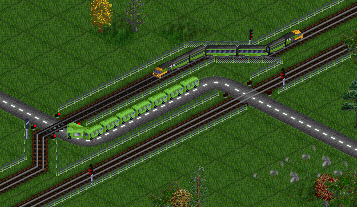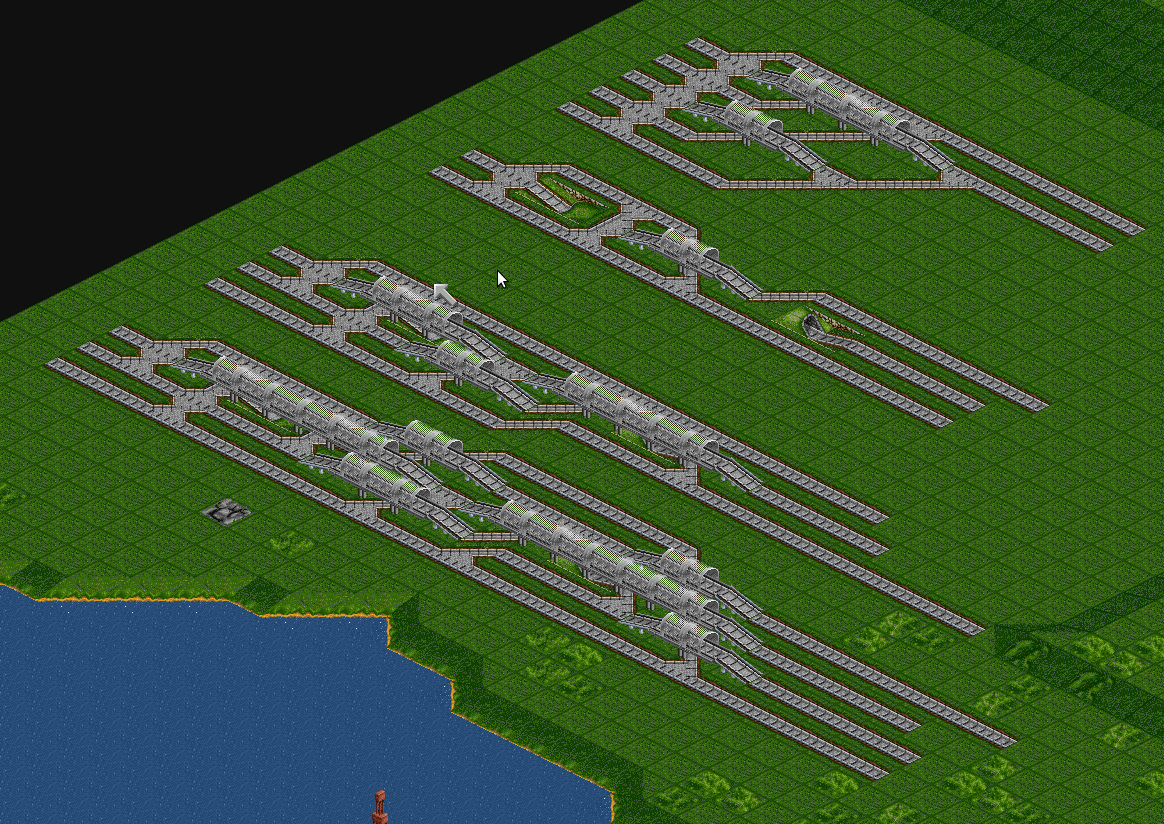
The reason I decided to place signs on the middle lane like that is to allow a train from the main track to reserve a section on a middle track only if it is not already reserved by another train going in another direction. What am I missing about the path signs? Or is it some sort of a bug? Because from my understanding, this design should work just fine. If I remove the marked sign, trains #3, #10 and #4 will pass the stopped train successfully. Sometimes they pass the stopped train successfully, but most of the time they get stuck.
#Openttd signals examples how to#
In this video I explain how to improve the flow on your rail network by using an advanced signalling. While it’s a lot of fun to play, especially multiplayer, the default gameplay quickly becomes old or stale to experienced players: There’s a runaway effect where if you accumulate enough wealth, it’s almost impossible to lose. But in my example, the sign that is pointed by the red arrow prevents other trains to reserve a section on the middle track. OpenTTD tutorial - Advanced signalling: Priority signals. OpenTTD is an open-source clone of the Transport Tycoon series of transport business simulation games. As I understand from the path signal descriptions, it should allow traffic from its back side. On the screenshot, I stopped Train11 and others got stuck behind it (I expected them to use a middle track to pass the obstacle). On the middle track, I use regular path signals to allow any direction on it. The idea of this guide is to present an easy solution. a simple track layout that allows faster trains to overtake slower trains. I wanted to use one-way path signals on side tracks to ensure a single direction on them. This is for everyone that would like to leverage the Routing Restrictions patch (you can find it in JGRs Patch Pack), but isnt doing so due to lack of documentation or examples.


2 tracks for both directions and a shared track in between which can be used in both directions for passing slower traffic on "main tracks".

I'm trying to build a two-way railroad with 3 tracks.


 0 kommentar(er)
0 kommentar(er)
